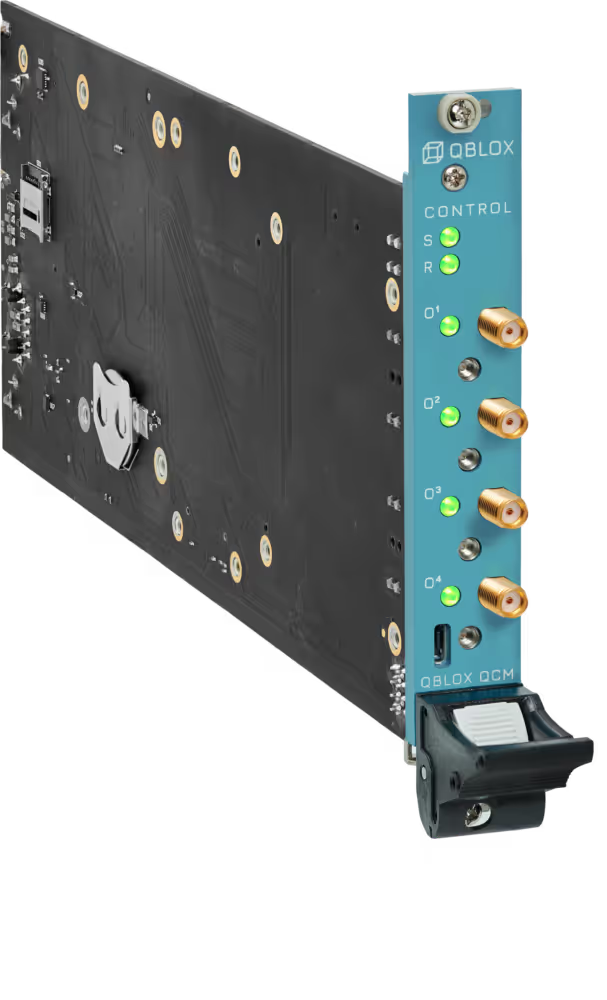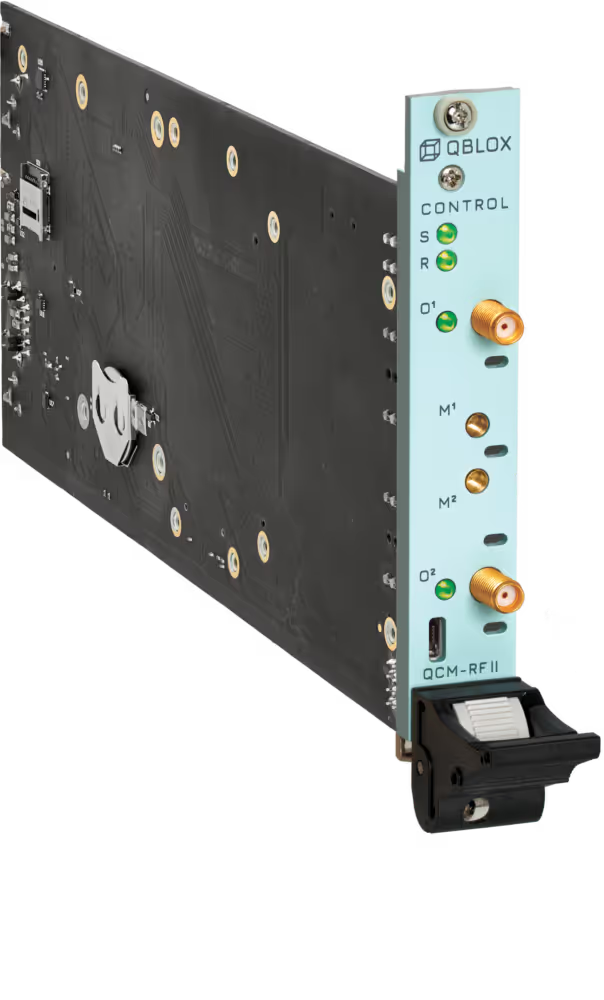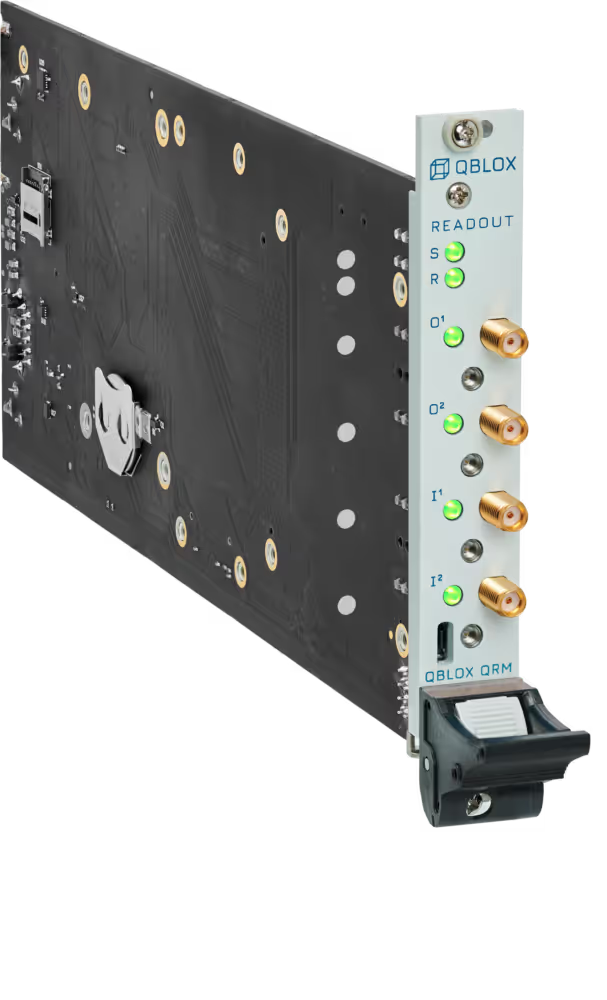We're taking this opportunity to reflect on what the quantum community has achieved. An exceptionally productive period marked by significant advancements lies behind us. This progress is a result of both the state-of-the-art equipment that supports researchers' work and their own tireless efforts.
Bringing us closer to practical quantum computing, numerous research studies have published results, and providing the tools and solutions needed are the Qblox Cluster and support team. In this blog, six research papers are shared, and we discuss the tangible impact Qblox’s partners have made, helping to bring important quantum discoveries to fruition.
1. Gatemon Qubit on a Germanium Quantum-Well Heterostructure
Using a germanium (Ge) quantum well in a Ge/SiGe heterostructure, researchers from Université Grenoble Alpes and CEA, Grenoble, France, have developed a gatemon qubit. Gatemons are a variant of superconducting qubits similar to transmons, which feature a gate-tunable semiconducting weak link as the Josephson element. Electrostatic control is what gatemons can offer, potentially overcoming scaling challenges caused by energy dissipation for their flux-controlled conventional counterpart. A significant hurdle in gatemon development is decoherence, where the sources for decoherence can be found back in the lossy semiconducting heterostructures and dielectric material.
Elyjah Kiyooka and colleagues infer that slightly lower dielectric losses are exhibited by their SiGe heterostructure. This advancement is a likely contributor to the slightly longer relaxation times observed in their gatemon qubits. To measure their gatemon in pulsed spectroscopy measurements, their experimental setup featured Qblox's Cluster, which included the QCM-RF and QRM-RF modules. As this technology lays the groundwork for these advancements, the next steps to push this technology further forward are eagerly anticipated by Qblox.
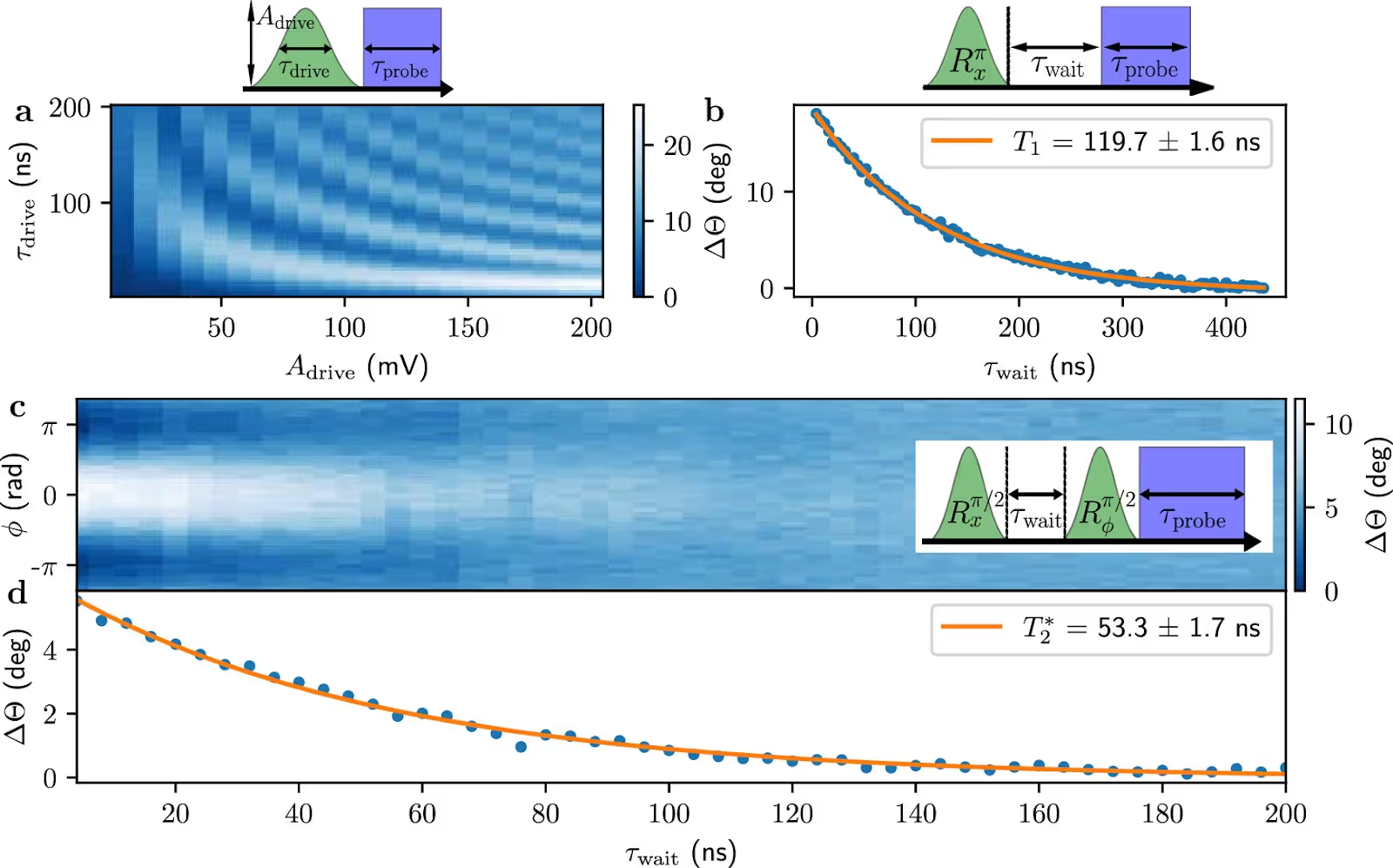
Read the paper: https://pubs.acs.org/doi/abs/10.1021/acs.nanolett.4c05539
2. Fast Unconditional Reset and Leakage Reduction in Fixed-Frequency Transmon Qubits
At Chalmers University of Technology, Sweden, an innovative protocol for rapidly resetting qubits and minimizing leakage has been developed by researchers. Both aspects are essential for efficient quantum error correction. The team's focus was on fixed-frequency transmon qubits, which are known for their stability and reliability.
To reset the transmon qubit, they leverage a tunable coupler. This coupler unconditionally mediates the transfer of the excited qubit state to the readout resonator, from which it decays into the feedline. In just 83 nanoseconds and with a fidelity rate above 99%, the complete transfer process—which includes the unconditional qubit state transfer, decay, and reset of the coupler—occurs. The Chalmers experimental setup includes a Qblox control stack, featuring a two-channel signal generator (QCM-RF) for drive pulses, and a QRM-RF for readout pulses. Managed by a current source S4g and a four-channel QCM was the additional flux control.
The outcome of this research not only streamlines the QEC cycle but also enhances algorithmic fidelity significantly. The developed protocol, as a result, represents a considerable advancement that facilitates the emergence of more efficient and reliable quantum computing systems. The potential of fixed-frequency transmon qubits in next-generation quantum architectures compatible with the surface code is underscored by this achievement.
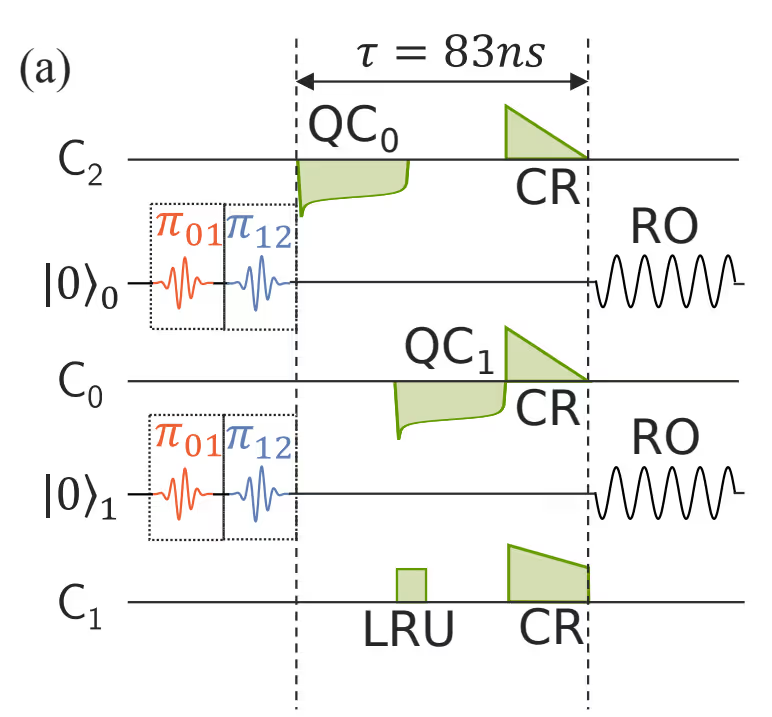
Read the paper: https://arxiv.org/pdf/2409.1674.8
3. High-Fidelity Single-Spin Shuttling in Silicon
High-fidelity shuttling of a single electron spin within a silicon quantum dot array has been successfully demonstrated by researchers from QuTech, Delft, The Netherlands. Advantages in coherence times and integration with existing semiconductor fabrication techniques are offered by silicon-based spin qubits, making them a promising candidate for large-scale quantum computing.
In their study, a quantum dot array was created by the team that enabled the transport of an electron spin over an effective distance of 10 micrometers in under 200 nanoseconds, with an average fidelity of 99% being achieved. For future quantum processors, this development is important, as the ability to move qubits efficiently without significant loss of coherence is crucial. The experimental setup utilized Qblox control electronics, including the QCM, QRM, and DC sourcing module for dynamic NCO phase and frequency control, along with low-noise DC voltages, baseband pulses, and RF reflectometry for accurate readout.
The dynamic reconfiguration of qubit connectivity and the integration of quantum information across larger processors are enabled by this achievement in high-fidelity electron spin shuttling. It marks a significant step towards realizing large-scale quantum computers and highlights the potential of silicon-based spin qubits in creating efficient and scalable quantum computing systems.
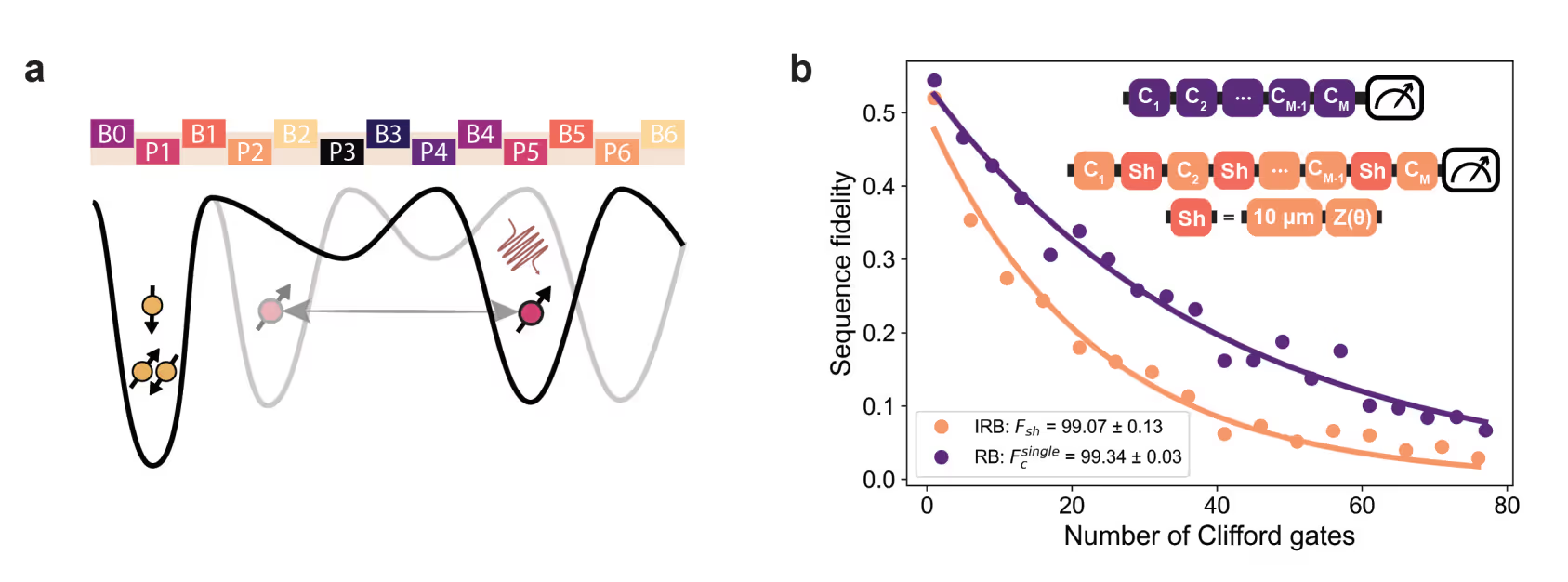
Read the paper: https://arxiv.org/pdf/2406.07267
4. Systematic Study of High EJ/EC Transmon Qudits up to d = 12
At the Department of Physics and Astronomy, University of Rochester, researchers focused on transmons as a platform for qudits. They exploited the higher excited energy levels to encode high-dimensional quantum information. These transmons, designed with a high ratio of Josephson energy (EJ) to charging energy (Ec), give access to manipulating multiple quantum states, which opens up new possibilities for quantum information processing. Observations that indicated up to 12 levels (d = 12) were recorded by the team, achieving exceptionally low process infidelities between adjacent levels. They even more impressively demonstrated high-fidelity control (93.8%) over a 10-dimensional state Hilbert space.
Using Qblox’s control electronics, including the QRM-RF and QCM-RF modules, the researchers precisely manipulated and measured these higher energy states. What makes this research particularly exciting is the ability to pull off this frequency multiplexed dispersive measurement, packing more computational power into the same physical footprint with the help of deep neural network analysis. The QRM-RF and QCM-RF support intermediate frequency (IF) multiplexing, which is thanks to their six independent digital sequencer cores capable of arbitrary waveform generation and data acquisition.
The potential of qudits as an alternative to qubits is highlighted by these research achievements in high fidelities within this multi-level approach. Ultra-fast entangling gates are enabled by the strong interactions between higher states, setting the stage for more resource-efficient, scalable quantum systems.
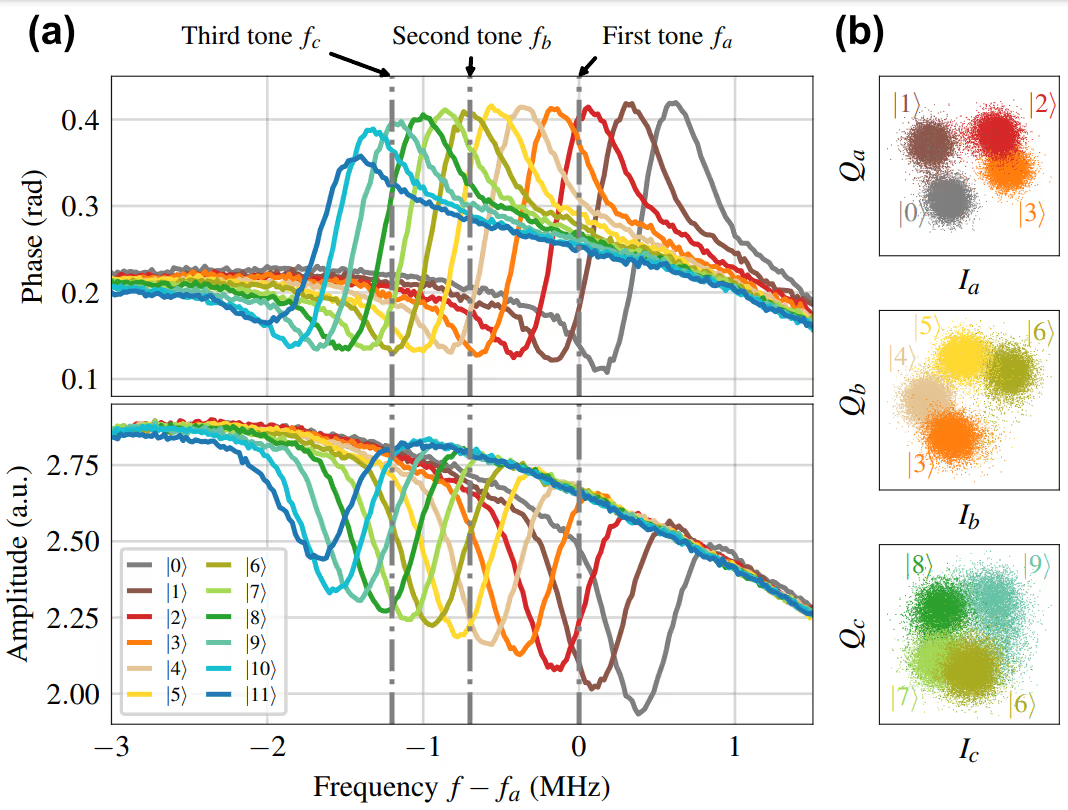
Wang et al., available on arxiv.
Read the paper: https://arxiv.org/pdf/2407.17407
5. Technology and Performance Benchmarks of IQM’s 20-Qubit Quantum Computer
IQM Quantum Computers, a global leader in superconducting quantum computers, has made a pivotal leap in superconducting qubit technology with the introduction of their IQM Crystal 20-qubit quantum processor (aka Garnet). A square lattice topology and a dedicated tunable coupler solution are featured in this processor, enabling high-fidelity two-qubit gate operations.
An impressive median two-qubit gate fidelity of 99.5% is achieved by the system, powered by the IQM Crystal Quantum Processing Unit (QPU). The successful entanglement of all 20 qubits into a Greenberger–Horne–Zeilinger (GHZ) state is a standout achievement in this breakthrough.
Integral to the success of this experiment were Qblox’s SPI D5a control electronics, which ensured the necessary ultra-stable and precise flux control for such large-scale entanglement experiments. An instrumental role in the success of the development was played by these electronics, by providing robust, reliable flux control over the qubits.
This development marks a significant step toward scalable quantum computing. It not only demonstrates the potential of advanced quantum processors but also brings us closer to practical quantum advantages, thus paving the way for solving problems that are currently beyond the capabilities of classical computing systems.
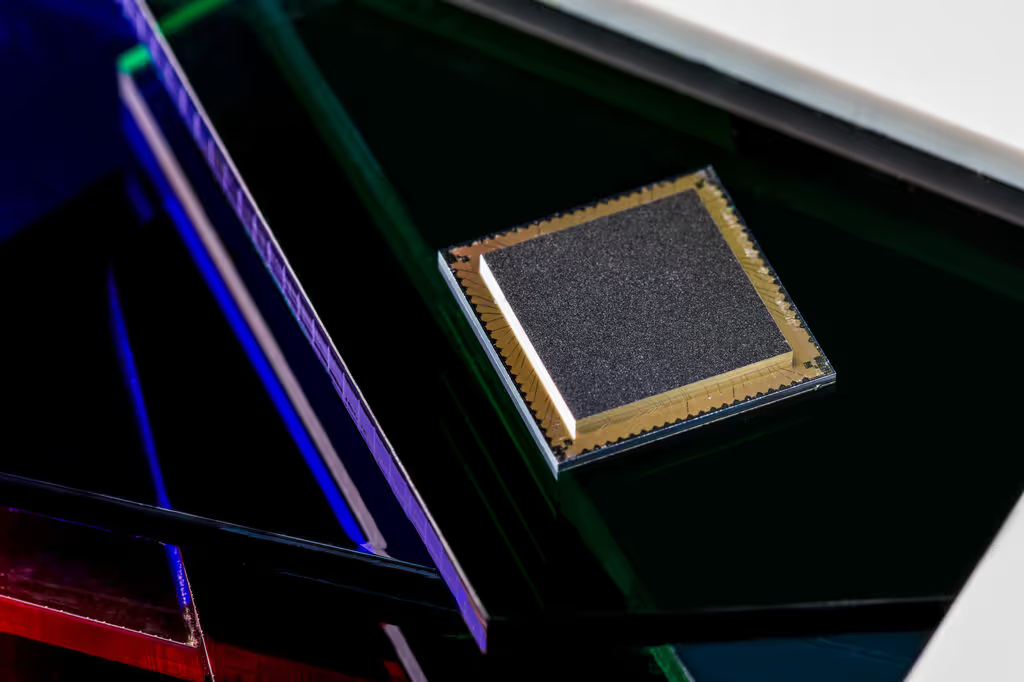
Read the paper: https://arxiv.org/pdf/2408.12433
6. Signal Crosstalk in a Flip-Chip Quantum Processor
A flip-chip superconducting quantum processor featuring exceptionally low signal crosstalk has been developed by researchers from Chalmers University of Technology in Sweden and VTT Technical Research Centre of Finland. By reducing interference and improving control precision, this design represents an important step toward scalable quantum processors.
Their work demonstrated on-resonant crosstalk levels better than -27 dB (average -37 dB) for capacitively coupled qubit-drive lines. For inductively coupled magnetic-flux-drive lines, it showed less than 0.13% direct-current flux crosstalk (average 0.05%). A promising trend is revealed by these results: crosstalk decreases with increasing distance, which indicates the scalability potential of quantum processors.
Qblox's SPI S4G control electronics were utilized by the experimental setup, which played a key role in ensuring the robustness and precision of the measurements. The strength and flexibility of superconducting circuit architectures are highlighted by the achievement of such low crosstalk levels, making them a promising foundation for scalable, high-fidelity quantum processors. Toward the development of more advanced, practical quantum computing applications, this advancement is a significant step, bringing us closer to realizing the full potential of quantum technologies in solving complex real-world problems.
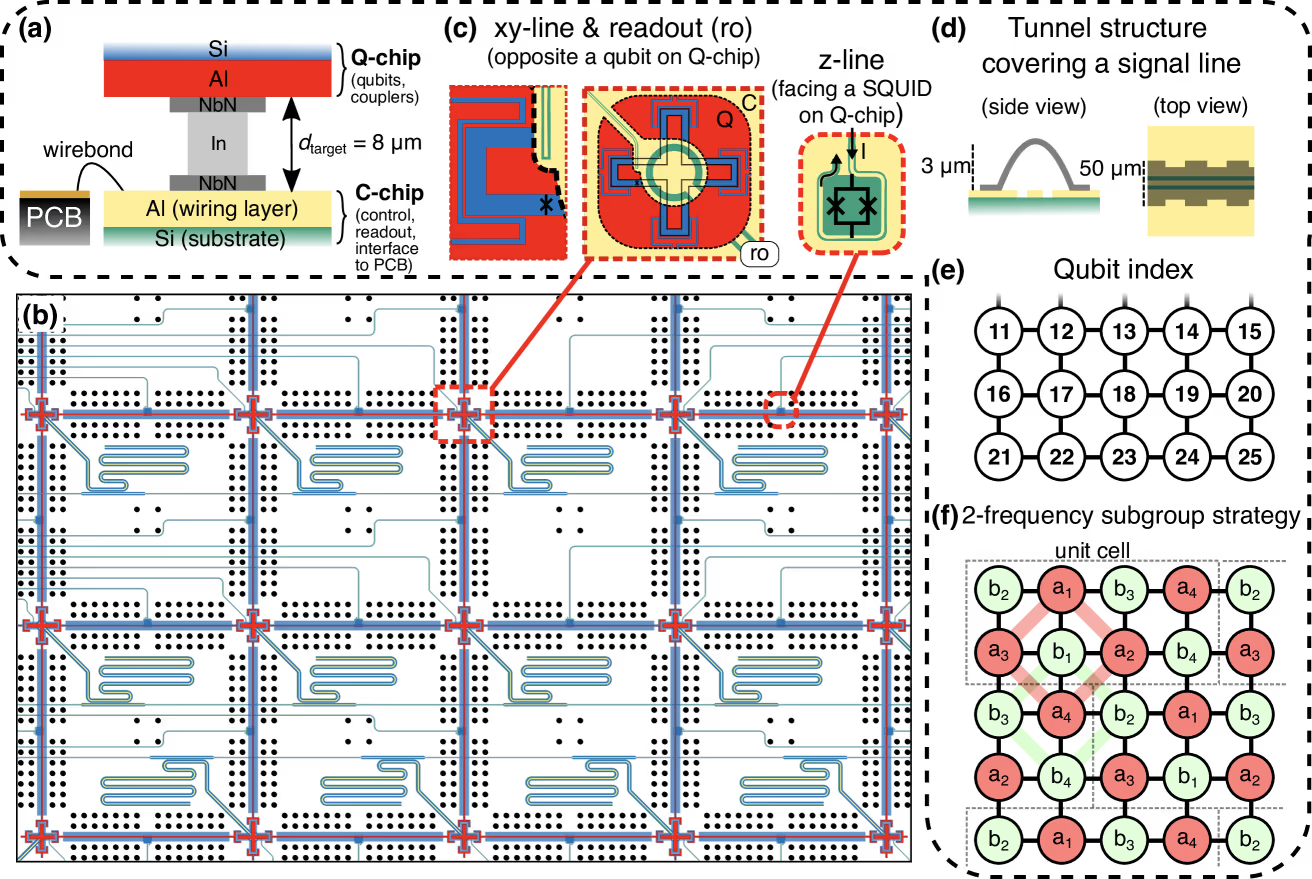
Read the paper: https://journals.aps.org/prxquantum/pdf/10.1103/PRXQuantum.5.030350
Conclusion
At the heart of what we do at Qblox are customer support and success, and our teams work carefully to ensure that the labs equipped with the Cluster can conduct their research efficiently. Highlighting significant strides made possible by Qblox's cutting-edge technology is what sharing these research papers allows us to do. From enabling high-fidelity qubit control in superconducting and silicon-based systems to supporting scalable quantum architectures, breakthroughs in gatemon qubits, fast qubit reset protocols, high-dimensional qudits, and low-crosstalk quantum processors were facilitated by Qblox technology.
The journey ahead, with such momentum, promises even greater innovation. We will continue to support groundbreaking discoveries and shape the future of quantum technologies.



.avif)
.svg)

